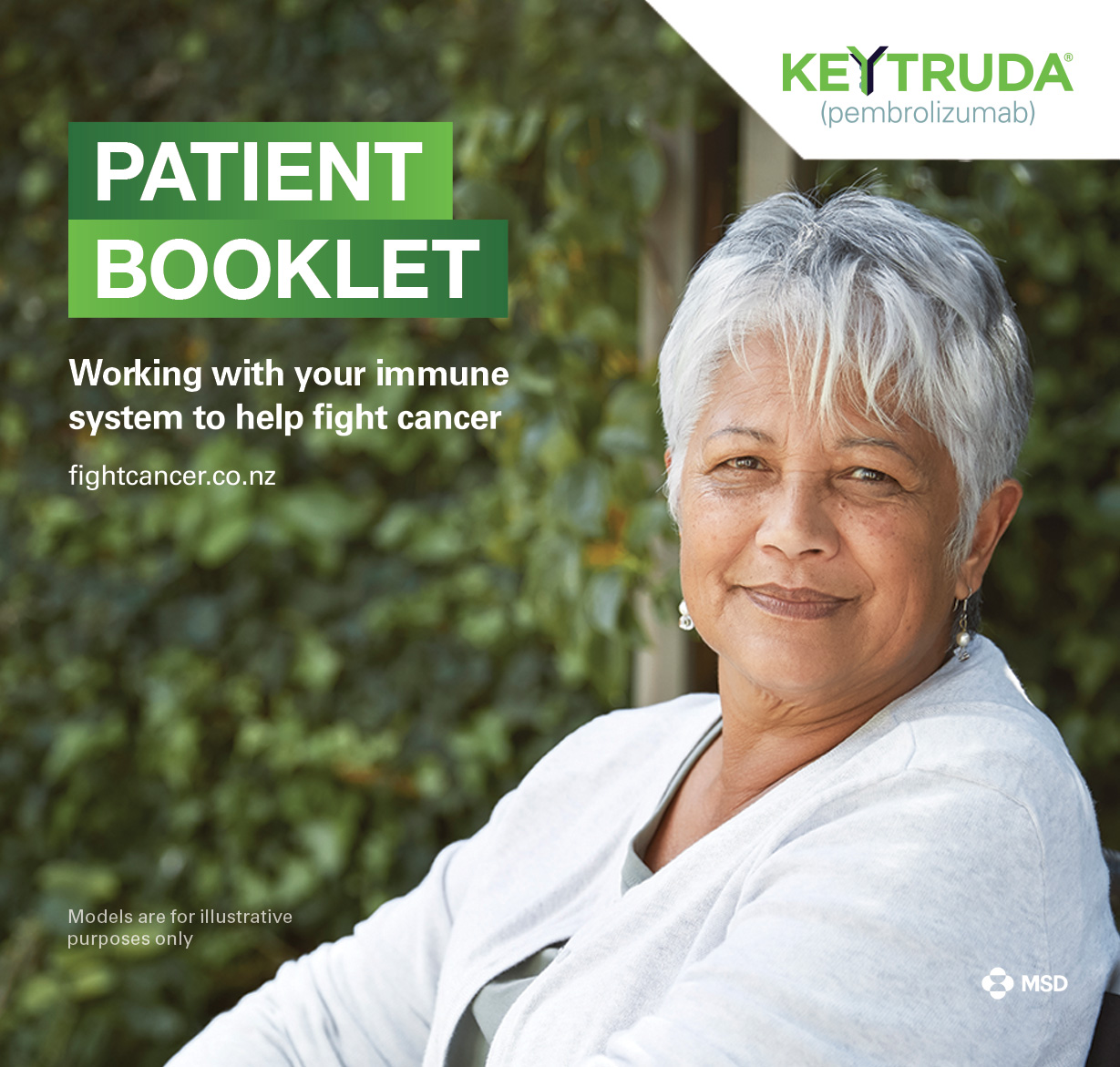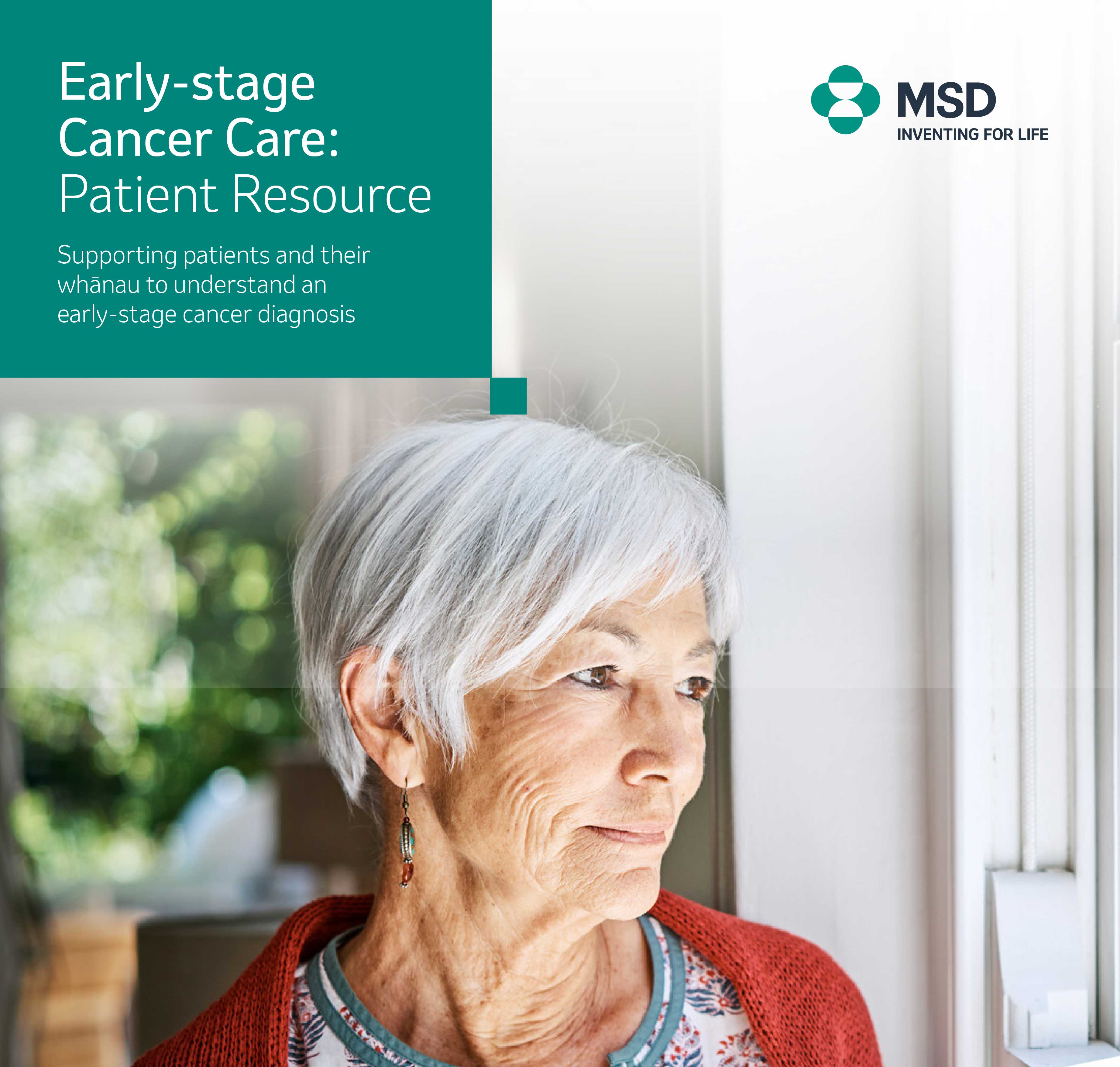About KEYTRUDA

KEYTRUDA is a medication that contains the active substance pembrolizumab. It is prescribed by doctors to treat patients with certain types of cancers.
The information on this website should be discussed with your healthcare professional and does not replace their advice.
What is KEYTRUDA used for?
Expand each cancer type below and click on “Learn more” to learn about what type of cancers KEYTRUDA may be used to treat.
Your doctor will consider various factors like the stage and type of your cancer when deciding on the appropriate treatment. Talk to your doctor to see if KEYTRUDA is an option for you.
Cervical cancer
Classical Hodgkin lymphoma
Colorectal cancer
Cutaneous squamous cell carcinoma
Endometrial carcinoma
Gastric cancer
Head & neck squamous cell carcinoma
Melanoma
MSI-H/dMMR cancer
Non-small cell lung cancer
Oesophageal carcinoma
Renal cell carcinoma
Triple-negative breast cancer
Urothelial carcinoma or bladder cancer

How KEYTRUDA works
KEYTRUDA is a type of cancer treatment called an immunotherapy. KEYTRUDA helps your immune system do what it is designed to do: find and fight cancer.
Your immune system is your body’s natural defence against cancer and other diseases. One of the ways it does this is to send out T-cells in your blood. These cells “patrol your body” in search of germs and abnormal cells to destroy.
If cancer cells manage to hide from the T-cells, they can grow into tumours and lead to cancer.
Unlike chemotherapy or radiation therapy, KEYTRUDA doesn’t attack cancer cells directly. Instead, it works by helping your T-cells detect and attack the cancer cells.
Click here for a video and other information about immunotherapy.
Patient Booklets
If you have been prescribed KEYTRUDA, please download the English or Māori version of our Patient Booklet below:


Early-stage Cancer Care Resource
This resource aims to support patients with cancer and their whānau to understand an early-stage cancer diagnosis.

Biomarker tests
A biomarker is a molecule found in our blood, body fluids, or tissues, which can tell us if something normal or abnormal is happening in our body, or if we have a certain condition or disease. A biomarker test is a laboratory test used to search for biomarkers in our body. To help develop a treatment plan, your doctor may arrange for biomarker tests to be done on a sample of your cancer. The test results may help your doctor decide on what treatment is right for you.
Depending on the type of cancer you have, you may have to do a biomarker test before you are able to start KEYTRUDA.

What to expect during KEYTRUDA treatment
If you have been prescribed KEYTRUDA, your doctor will arrange for you to be given KEYTRUDA via an intravenous infusion (IV). Treatment with KEYTRUDA usually takes place every 3 or 6 weeks and takes about 30 minutes.
In addition to your infusions, your doctors will want to monitor your general health and keep track of how you are responding to treatment. You can expect regular doctors’ appointments, scans and blood tests during your treatment.
What are the side effects of treatment with KEYTRUDA?
Side effects may occur with KEYTRUDA.
Like all medicines, KEYTRUDA can cause side effects, although not everybody gets them. Your doctor will discuss these with you and will explain the risks and benefits of your treatment.
Side effects with immunotherapy are different to the side effects of other cancer treatments and are managed differently.
KEYTRUDA can cause some serious side effects. These side effects can sometimes become life-threatening and can lead to death. These side effects may happen anytime during treatment or even after your treatment has ended. You may experience more than one side effect at the same time.
It is important that side effects are reported to your doctor early.
It’s important that your doctor is made aware as soon as possible if you notice new side effects or side effects that get worse. Early treatment of side effects may stop them becoming more serious.
If you have any of the following symptoms, call or see your doctor right away. Expand for more information.
Signs and symptoms of lung problems
- Shortness of breath
- Chest pain
- Coughing
Signs and symptoms of problems with your intestines
- Diarrhoea or more bowel movements than usual
- Your stools (poo) are black, tarry, sticky or have blood or mucus
- Severe stomach pain or tenderness
Signs and symptoms of liver problems
- Nausea or vomiting
- Feeling less hungry
- Pain on the right side of your stomach
- Your skin looks yellow
- The whites of your eyes look yellow
- Dark urine
- You bleed or bruise more easily than normal
Signs and symptoms of kidney problems
- Changes in the amount of urine
- Change in the colour of your urine
Signs and symptoms of hormone gland problems (especially the thyroid, pituitary, and adrenal glands)
- Rapid heartbeat
- Weight loss
- Increased sweating
- Weight gain
- Hair loss
- Feeling cold
- Constipation
- Your voice gets deeper
- Muscle aches
- Dizziness or fainting
- Headaches that will not go away or unusual headache
Signs and symptoms of blood sugar problems
- Feeling more hungry or thirsty
- Needing to urinate more often
- Weight loss
Signs and symptoms of skin problems
- Rash
- Itching
- Skin blistering, peeling or sores
- Ulcers in mouth or in lining of nose, throat, or genital area
Signs and symptoms of problems in other organs
- Muscle pain or weakness
- Changes in eyesight
- Stomach area pain with nausea and vomiting (pancreatitis)
- Shortness of breath, irregular heartbeat, feeling tired, or chest pain (myocarditis)
- Confusion, fever, memory problems, or seizures (encephalitis)
- Swollen lymph nodes, rash or tender lumps on skin, cough, or eye pain (sarcoidosis)
- Pain, numbness, tingling, or weakness in the arms or legs; bladder or bowel problems including needing to urinate more frequently, urinary incontinence, difficulty urinating and constipation (myelitis)
- Inflammation of the blood vessels (vasculitis)
- Decreased function of the parathyroid gland, which may include muscle cramps or spasms, fatigue and weakness (hypoparathyroidism)
- Pain in the upper right part of the stomach, swelling of the liver or spleen, fatigue, itching or yellowing of the skin or whites of eyes (sclerosing cholangitis)
- Inflammation of the stomach lining, which may include severe stomach pain or tenderness, nausea or vomiting (gastritis)
- Destruction of red blood cells, which may include dark urine, pale or yellow skin/eyes, light-headedness, feeling tired, rapid heartbeat, or shortness of breath (haemolytic anaemia)
- Decreased ability of the pancreas to make digestive enzymes, which may include diarrhoea with loose and oily tools, weight loss, metabolic bone disease, and vitamin or mineral deficiencies (exocrine pancreatic insufficiency)
Signs and symptoms of infusion (IV) reactions
- Shortness of breath
- Itching or rash
- Dizziness
- Fever
There are possible side effects of treatment with KEYTRUDA in people who have received a transplant
Rejection of a transplanted organ
People who have had an organ transplant may have an increased risk of organ transplant rejection. Your doctor should tell you what signs and symptoms you should report and monitor, depending on the type of organ transplant that you have had.
Graft-versus-host-disease (GVHD) in people with bone marrow (stem cell) transplant that uses donor stem cells (allogeneic)
GVHD may occur if you had this transplant in the past. Your doctor will monitor you for the following signs and symptoms: skin rash, liver inflammation, abdominal pain, and diarrhoea.
Common side effects
Very common side effects (may affect more than 1 in 10 people) include: diarrhoea, nausea, itching, rash, joint pain, back pain, feeling tired, cough, patches of skin which have lost colour, stomach pain, decreased sodium levels in the blood, low levels of thyroid hormone.
The most common side effects when KEYTRUDA is given alone to children are: fever, vomiting, headache, stomach pain, decrease in number of red blood cells, cough, constipation.
The following side effects have been reported in more than 1 in 5 people when KEYTRUDA was given in combination with chemotherapy: hair loss, feeling tired, diarrhoea, vomiting, rash, fever, decrease in white blood cell count, decreased appetite, joint pain, swelling of the lining of the digestive system (for example mouth, intestines), mouth sores.
The most common side effects when KEYTRUDA is given in combination with axitinib: diarrhoea, high blood pressure, fatigue, low levels of thyroid hormone, decreased appetite, blisters or rash on the palms of your hands and soles of your feet, nausea, increase in liver enzyme levels, hoarseness, cough, constipation.
The most common side effects when KEYTRUDA is given in combination with lenvatinib: high blood pressure, diarrhoea, feeling tired, decreased appetite, low levels of thyroid hormone, nausea, vomiting, weight loss, joint pain, headache, constipation, hoarseness, urinary tract infection, stomach-area (abdominal) pain, blisters or rash on the palms of your hands and soles of your feet, rash, protein in your urine, increase in liver enzyme levels, feeling weak.
If you have any side effect that bothers you or that does not go away, tell your doctor. Less common side effects can happen. KEYTRUDA may cause other side effects that are not listed above.
For more information, talk to your doctor.

Questions to ask your doctor

Patient Resources
References:
KEYTRUDA Consumer Medicine Information
Cancer Council Australia. 2021. Understanding Immunotherapy. A guide for people affected by cancer.
Available at: https://www.cancer.org.au/assets/pdf/understanding-immunotherapy-fact-sheet
Accessed on 02/06/2022
Cancer Council Australia. 2022. Understanding Chemotherapy. A guide for people with cancer, their families and friends.
Available at: https://www.cancer.org.au/assets/pdf/understanding-chemotherapy-booklet
Accessed on 02/03/2023
Cancer Council Australia. 2021. Understanding Radiation Therapy. A guide for people with cancer, their families and friends.
Available at: https://www.cancer.org.au/assets/pdf/understanding-radiation-therapy-booklet
Accessed on 28/09/2022
National Cancer Institute. Dictionary of Cancer Terms. Biomarker.
Available at: https://www.cancer.gov/publications/dictionaries/cancer-terms/def/biomarker
Accessed on 17/12/2019
National Cancer Institute. 2021. Biomarker testing for cancer treatment.
Available at: https://www.cancer.gov/about-cancer/treatment/types/biomarker-testing-cancer-treatment
Accessed on 25/08/2021
NZ-KEY-00865. TAPS DA 2339KN TAPS NP20132. Last updated July 2024.

 KEYTRUDA Patient Booklet (English)
KEYTRUDA Patient Booklet (English) 